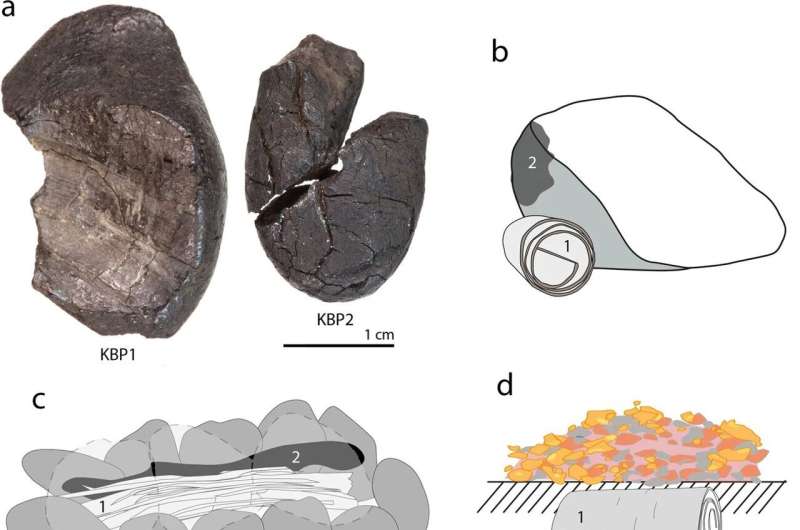May 30, 2023 report
This article has been reviewed according to Science X's editorial process and policies. Editors have highlighted the following attributes while ensuring the content's credibility:
fact-checked
trusted source
proofread
Study finds Neanderthals manufactured synthetic material with underground distillation

Researchers at the Eberhard Karls University of Tübingen and colleagues in Germany have taken a closer look at the birch tar used to affix Neanderthal tools and found a much more complex technique for creating the adhesive than previously considered.
In their paper, "Production method of the Königsaue birch tar documents cumulative culture in Neanderthals," published in Archaeological and Anthropological Sciences, the team compared different methods of creating birch tar to the chemical residues found on ancient Neanderthal tools.
One of the attributes of human intelligence is the ability to synthesize substances and materials not found in nature. Tools use was once part of this consideration, but since several animals have been discovered altering and manipulating materials to be used as tools, it has become a less unique sign of intelligent behavior.
Synthetic material manufacturing remains a significant aspect of our cognitive advantage over other animals, as it requires sentient thinking, planning and comprehension of our actions to convert raw materials through a learned process.
The Tübingen study illustrates that modern humans are not alone in this ability and were not the first to reach this mental milestone. The birch tar used by Neanderthals predates any known adaptation by modern humans by 100,000 years. The sticky material was used as an adhesive backing to connect stone to bone and wood in tools and weapons, with the added benefit of being water-resistant and resistant to organic decomposition.
How Neanderthals made birch tar has been speculated to be either a manufactured process or a found substance scraped from rocks after a fire. Through a comparative chemical analysis of two birch tar pieces from Germany and a large reference birch tar collection made with Stone Age techniques, the researchers found that Neanderthals did not simply find birch tar after a fire, nor did they use the simplest manufacturing method.
Instead, researchers have discovered that the Neanderthals who made the German birch tar used the most efficient method with a stepwise oxygen-restricted distillation process of underground heating to extract the synthetic adhesive.
According to the authors, "This degree of complexity is unlikely to have been invented spontaneously." Suggesting that the technique would have started with simpler methods and been developed into the more complex process by experimentation.
To test the process that led to the German birch tar, the researchers engaged in experimental archaeology by recreating five different techniques for extraction, two above-ground and three below ground. With the birch tar extracted, the team applied infrared spectroscopy, gas chromatography-mass spectrometry and micro‑computed tomography to analyze and compare their tar-making techniques with the ancient birch tar artifacts.
Oxygen availability at the time of extraction left a clear marker on the experimental tars, creating a signature that clearly separated above-ground from below-ground methods. The ancient artifacts matched the below-ground manufacturing process. Both ancient tar artifacts and the below-ground experiments showed some soil mineral interaction and were free from soot-related carbons, unlike the above-ground techniques.
Underground transformative techniques are trickier to execute than above-ground techniques because some elements cannot be observed or corrected after the procedure begins requiring a more precise set-up procedure.
The evidence for cognitively complex Neanderthals has only increased in recent years, as archaeological evidence reveals many of the technological firsts thought to be modern human inventions were already in use among Neanderthals. At this point, it may benefit anyone who prefers thinking of human intelligence as an exceptional uniqueness to concede that Neanderthals were humans too.
According to the authors, "... Neanderthal birch tar making seems to be the first documented manifestation of this kind in human evolution."
More information: Patrick Schmidt et al, Production method of the Königsaue birch tar documents cumulative culture in Neanderthals, Archaeological and Anthropological Sciences (2023). DOI: 10.1007/s12520-023-01789-2
© 2023 Science X Network



















